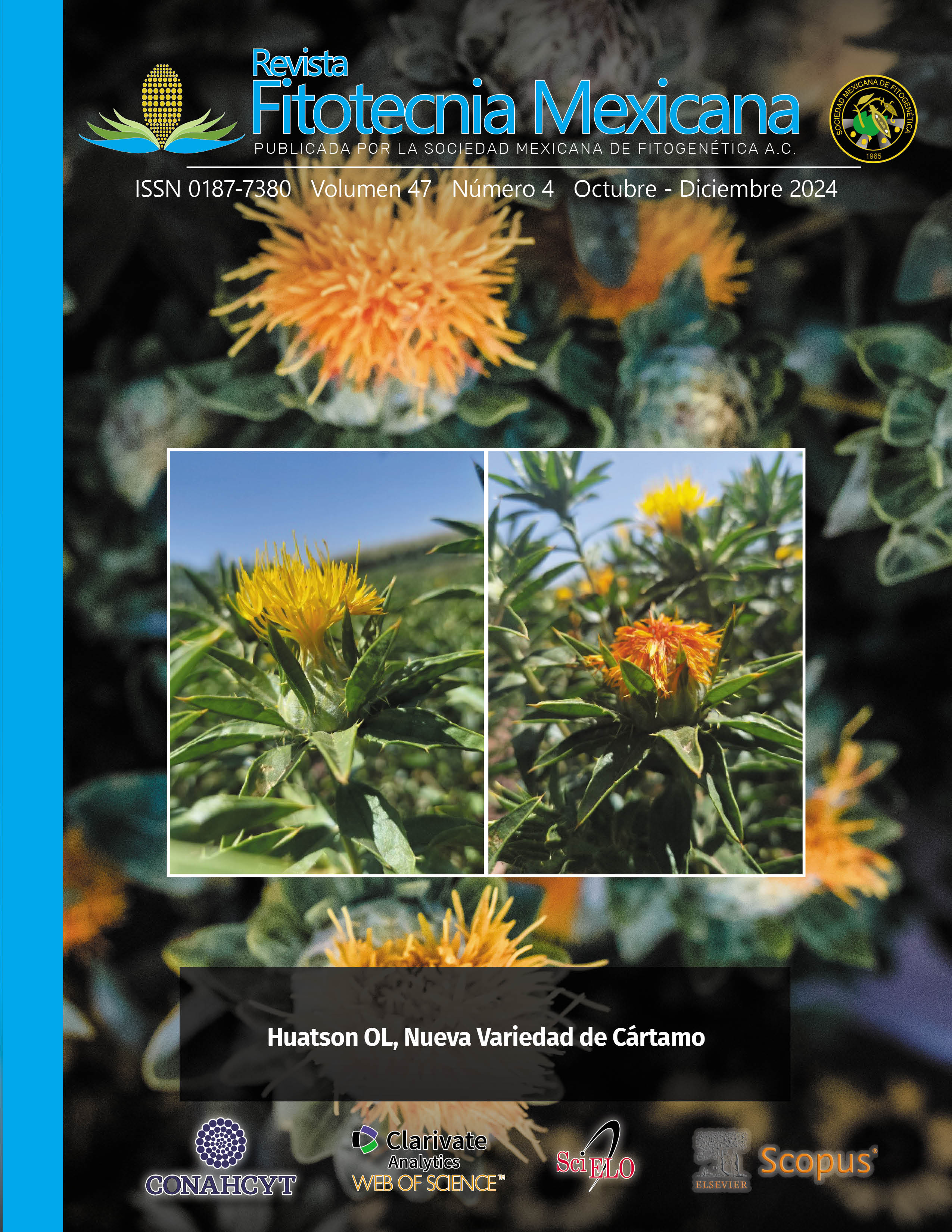‘Candidatus Phytoplasma asteris’ (16SrI) AND Dalbulus maidis ASSOCIATED WITH WHITE LEAVE SYMPTOMS IN MAIZE
Main Article Content
Abstract
Maize (Zea mays L.) has become the most economically important crop worldwide. This cereal belongs to the Poaceae family, is native to Mexico and used for human and livestock consumption. In Mexico, its importance goes far beyond the economy, its influence at a social and cultural level has been reflected in the vestiges of ancient civilizations such as that established by the Mayans, for whom maize had a religious meaning; however, some biotic factors such as bacteria, viruses, fungi and phytoplasmas may limit the production of the various varieties of maize grown in Mexican territory. During the 2021 crop cycle, maize plants were collected from commercial plots in the municipality of Valparaiso, Zacatecas, Mexico, which presented a symptomatology related to the presence of phytoplasmas (dwarfism, color changes in leaves from green to white, general decline and death); in addition, asymptomatic maize plants were sampled as a control, and insects of the species Dalbulus maidis were sampled as well. Samples were analyzed by nested polymerase chain reaction (PCR) using the universal oligonucleotides combination P1/Tint, followed by the pair of oligonucleotides R16F2n/R16R2 resulting in sequences of the 16S rDNA gene from phytoplasmas. Phylogenetic and virtual RFLP analyses of the 16S rDNA sequences obtained from the analyzed samples showed 100 % sequence identity to each other and 99.7 % sequence identity with the homologous gene of Candidatus Phytoplasma asteris (GenBank accession KMM30790). The incidence of this new disease was 15 % in the sampled crops. These results relate Dalbulus maidis and Candidatus Phytoplasma asteris as a possible vector and causal agent, respectively, of a new symptomatology in maize.

